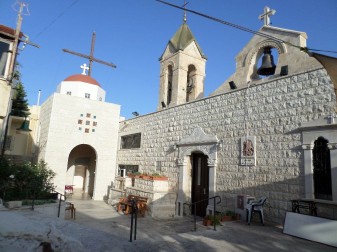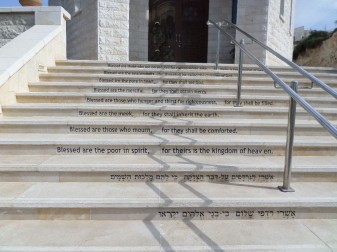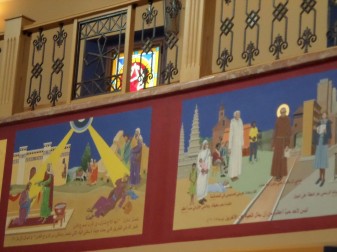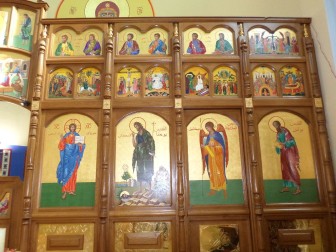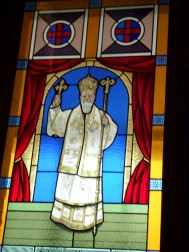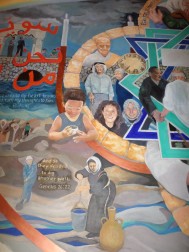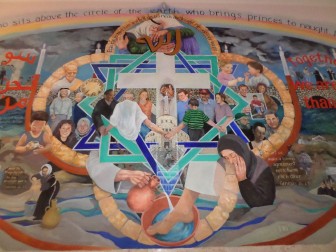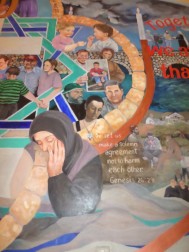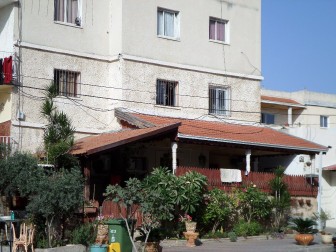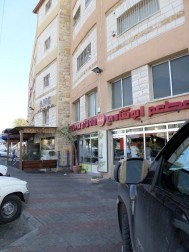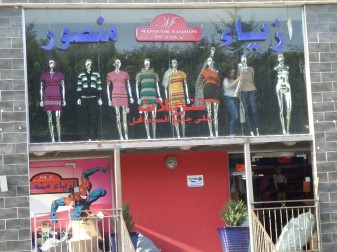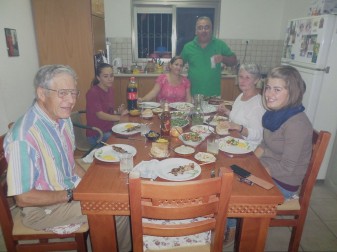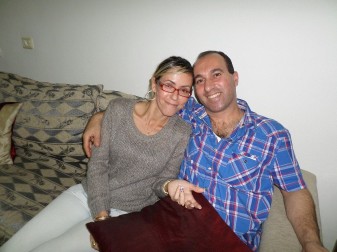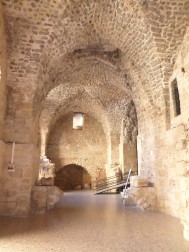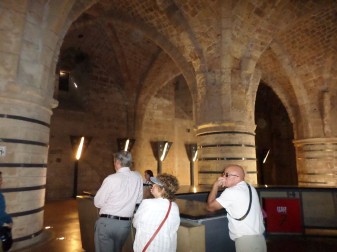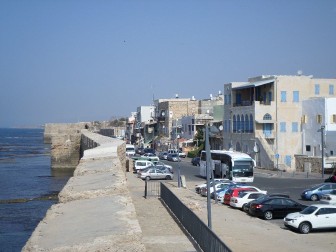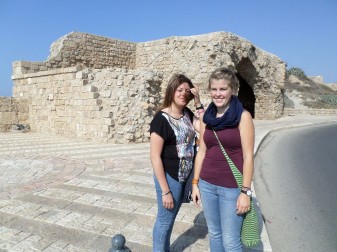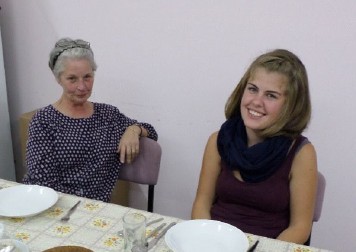Chapter 4 / Back to Index / Chapter 6
Sam and Ruth's Blog from Ibillin
Chapter 5
11/04/2013; 9:00 am
Venturing Out (a little more): With nearly a week before the next
group's arrival, we have enlarged our circle of wanderings by a little
more. We have continued to take our regular walks up to the top
of the hill where there are two churches (Melkite Catholic and
Orthodox) and a mosque. The mosque is the newcomer, representing
Islam which has been a major religion here for only 1400 years.
The Melkite and Orthodox churches share roots that may go back to
the first century. After all, Jesus and most of the disciples
were from Galilee. We learned that in the 17th century there was
an argument among the Greek Orthodox in Istanbul. This resulted
in a split in which a large group left the Orthodox and joined with the
Catholic Church in Italy. These are the Melkites, who continue
with the Orthodox liturgy but are responsible to the Pope. They
are the largest Christian sect in Israel, with 80,000 members.
We have re-read Abuna Elias Chacour's book, Blood Brothers, and are
trying to trace out many of the episodes of the book that took place up
on the tiop of the hill.
In preparation for three group visits this week, we are trying to
familiarize ourselves with the large church, called "the Church of the
Beatitudes" which stands at the east end of the campus. There is
a picture of this church in last week's blog. On steps leading up
to the front door are the beatitues, written in at least four
languages. Then inside there are many paintings along the
balconies combining each biatitude with a parable or a part of Jesus'
ministry as told in the Gospels. For example, blessed are the
comforters, for they shall be comforted" goes with a painting depicting
the parable of the Good Samaritan.
In addition there is a large Iconostasis separating the Nave (where the
pews are) from the Sanctuary (where much of the action of the service
takes place.) There are also very striking stain glass windows.
Under the church is a large auditorium, built with the money that came
with the Niwano Peace Prize, which was awarded to Elias Chacour in
Japan in 2001. The auditorium is very large - it could seat an
audience of about 1500. In the rear is a remarkable mural drawn
by Diane Roe, a Christian Peace-making Teams worker during the awful
times of the second intifada. The following three pictures show
the mural, and to read her moving description of the mural you can
follow this link.
It will be a challenge to take groups on a tour of the church and
auditorium, without getting emotionally involved in the content.
We have gone "off campus" this week. Friday Kate and I were
driven across town by Elias O. (husband of the cook) to the bank.
It was comforting to have the ATM machine accept my debit card
and pin, and give me 500 shequels. (That's about $141, but I have
not determined how much my bank account was charged.
On Saturday Ruth and I realized that just down the road is neighboring
city called Shefar'am, or Shefa'amr less than two miles away along the
road that passes by the Mar Elas campus. It was an easy walk,
into a much more urban city of 35,000. We strayed a little from
the main road, walking through some neighborhoods among the hills.
We are limited in communication. It seems surprising that
English seems less spoken here than in Iran, and signs in Arabic and
Hebrew are equally undecipherable. Although Wikipedia
describes Shefar'am as mostly Arab, we felt that we were seeing some
Jewish areas Jewish businesses in the city. In Ibillin we see
none. Here are some scenes from our walk:
Saturday night we were invited by the Henry, the High School
Maintanence Man, to dinner at his house. It was a special
evening, with some surprises. Henry comes from a family of nine
brothers and one sister;
his own family is smaller - just two children. We four volunteers
were treated to a sumptious dinner of Arab vegetable dishes, salads and
grilled lamb (kebobs) and chicken. Henry's wife and daughter
fixed the vegetable dishes and salads while Henry was in charge of the
charcoal grill. Two of Henry's brothers came in to meet us.
Roni and his girlfriend Mali (or Molly?) spent most of the
evening. They live in Haifa. Mali if Jewish, making her the
first Jewish person I have met in Ibillin. She was able to tell
us a little about the racial situation in Israel, and the family
difficulties on both sides when a Palestinian man has a Jewish girl
friend. She also said that when she watches reports on CNN about
the Palestinian-Israeli conflict, the reports always seem
pro-Palestinian. Maybe that should not be a surprise. We
all bring our own baggage to hang on what we see and hear.
Yesterday we ventured further, taking a1 1/4 hour bus ride to Akko -
also in the history books as Acre. Akko may have a history dating
to 1500 BC. It seems to have been under Canaanite, Phoenician,
Jewish, Muslim, Crusader, Mamluk, Ottoman, British and then Israeli
control since then. Now it is a 2/3 Jewish city of about 70,000.
We melded into a couple of tour groups to get a guided tour of
the old Crusader halls and castle. As the pictures show, they
were make to last! We spent some time along the waterfront and in
the Old City of narrow pathways. We took the opportunity to try
to find an accordion, but even in the Jewish shopping area we could not
find a music store. Here are a few views of Akko:
Today is Monday, and we must say goodby to Kate and Franzyska who have
been so helpful in orienting us to this job. This evening a
23-member group arrives, led by the Pilgrims of Ibillin director, Joan
Deming. It is our first test.
Enjoy yourselves, and Thanks!
